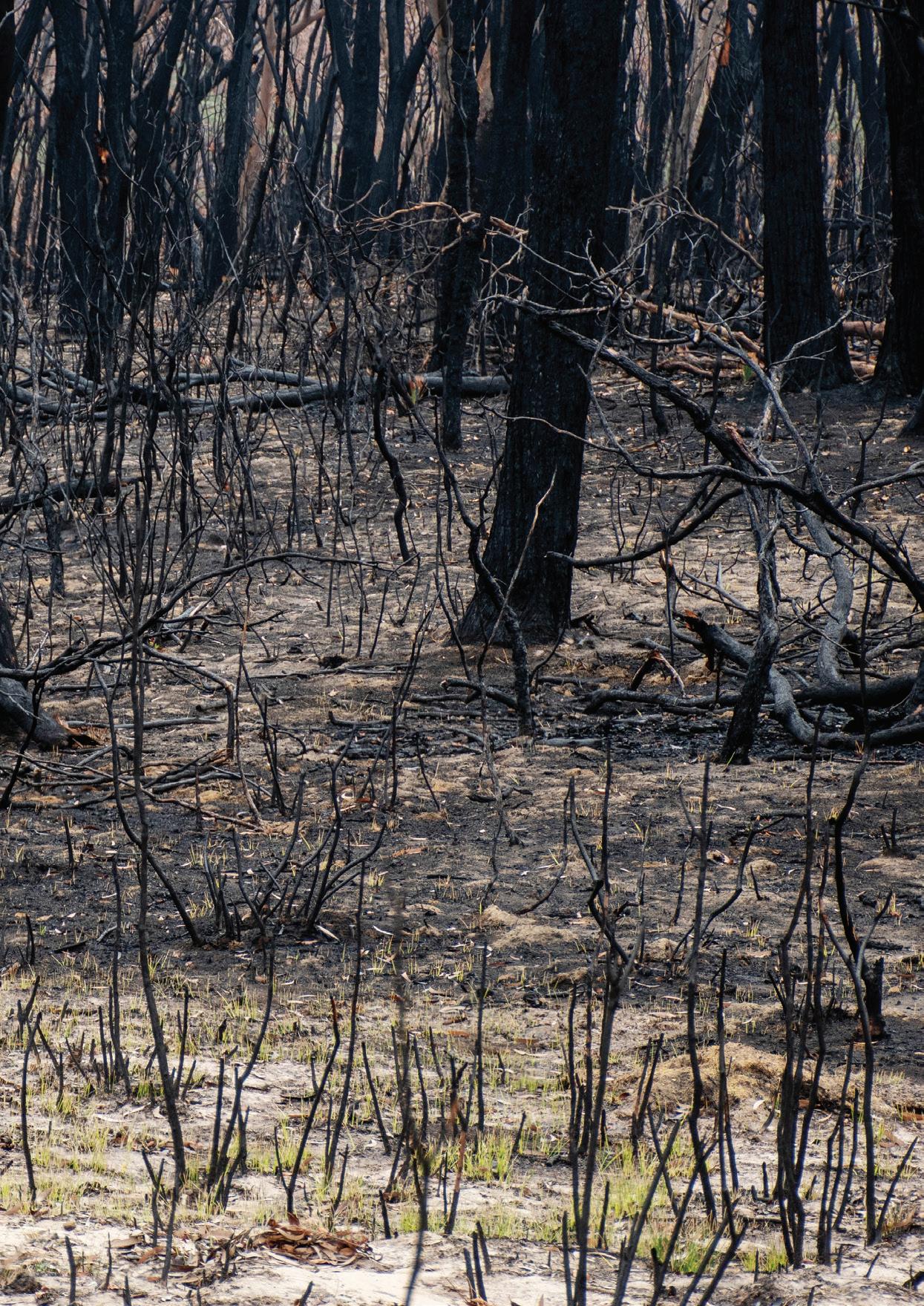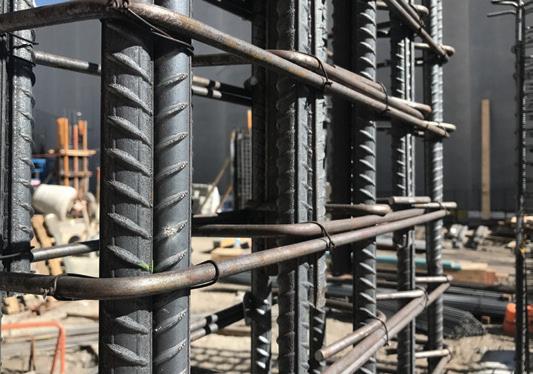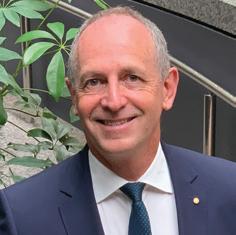
3 minute read
REBUILDING SUSTAINABLY AFTER THE BUSHFIRES
by Dr Sukhbir Sandhu, Senior Lecturer in Sustainability and Ethics, University of South Australia, UniSA Business
With bushfires raging across 11 million hectares of Australia’s tinder dry landscape in January 2020, the Lucky Country moniker hung loosely. Here, Dr Sandhu explores some factors to consider as fire damaged communities look towards rebuilding.
Advertisement
Dr Sukhbir Sandhu.

Nearly 2,500 homes were destroyed, and 26 people lost their lives in the recent bushfires. The economic damages have been calculated in the billions, and while the mental and emotional damages are harder to quantify, stories of heart wrenching loss continue to gradually unfold.
Forest fires have always been a part of Australia’s ecology (and indeed some native trees even need the bushfires to disperse their seeds), but climate change is creating a new reality. In 2019, Australia recorded its highest mean temperature (since recording began in early 1900) and it was the driest year on record.
Climate change means that bushfires in Australia have changed dramatically over the past decade. The frequency and the ferocity of our fires has changed – the fires are more brutal, and the fallout is extensive. As our world gets hotter and drier, the bushfire seasons are also changing. The fires are now starting much earlier and burning for longer, with the bushfires in the 2019/2020 summer starting way back in September and going well into February. This is reducing the time available for recovery and prevention.
The immense devastation, resulting from the fires, means policymakers are under pressure to identify strategies that will future-proof communities as they rebuild beyond the 2020 bushfires.
When the problem changes, our responses also need to change. Our old ways of dealing with the bushfires are becoming obsolete. Australia’s responses to the fires must change.

FIRE-LINES COULD HELP POLICYMAKERS
Australia should consider the establishment of a ‘fire-line’ – a bushfire demarcation line to identify high-risk areas not recommended for human habitation. In the same vein as Goyder’s Line of rainfall (created in South Australia in 1865 to map areas liable to drought and therefore unsuitable for planting crops), a fire-line would help people clearly recognise areas that are suitable, or not, for living.
As people rebuild their homes, and as governments invest in rebuilding schools, communities and the wider infrastructure, they need to be asking the question – is it actually safe to do so in these areas?
A fire-line will assist people and policymakers in dealing with this moral and economic dilemma. The bushfires have destroyed the livelihoods of far too many people to be remedied by standard recovery and rebuilding strategies. And, with climate change, the blazes will keep burning; as bushfires continue to rage into residential areas, governments must consider something more ground-breaking in recovery.
It’s time for policymakers to take a strong stand where it is safe for communities to rebuild, and a fire demarcation line could help achieve this. Policymakers already have the basic tools to start such an initiative which, in conjunction with CFS aerial footage, satellite imagery and well-developed insurance company models (that not only identify areas susceptible to bushfires, but coastal flooding as a result of rising sea levels) would provide clear information for a new fire-line.
BUSHFIRE-RESILIENT CONSTRUCTION GUIDELINES
The fire-line strategy needs to be accompanied by compulsory bushfireresilient construction guidelines (especially in areas that are adjacent to fire-lines). We already have the technology to create homes with bushfire-resistant materials, and to enable houses with certain structural properties to serve as fire bunkers.
The Australian Standard for Building in Bushfire Prone Areas (AS3959) provides clear requirements for residential dwellings built in areas that pose a high risk of bushfires (ranging from ember attack to direct flame attack). Bushfire-resistant houses do not have to look bizarre or be unaffordable. Bushfire-resistant designs and materials can be incorporated into conventional houses.
Only about five per cent of the cost of the building goes towards meeting the BAL-40 requirements (one of the highest fire standards). But to date, there are no clear policies that support or promote these technologies for use in vulnerable areas.
If policymakers do not act, insurance companies will take the decision out of their hands. After the California fires, insurance companies lost nearly 24 billion dollars and have become unwilling to underwrite homes and infrastructure in fire prone areas.
Protecting our homes and infrastructure through fire-lines and fireproofing, however, do not replace the need to urgently focus on climate change. To ensure that our Lucky Country remains so, we need long-term, sustainable strategies to address the undeniable effects of climate change. Let us not let this crisis go to waste.










